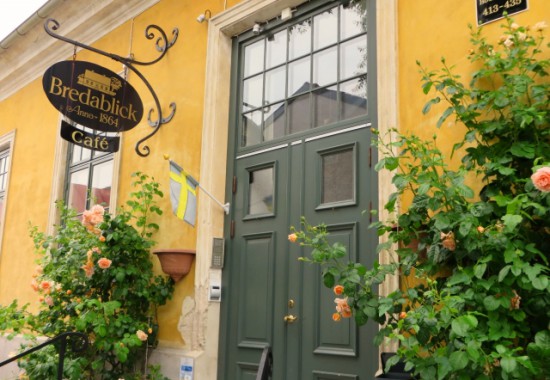vepr 12 stock replacement
Parents' level of involvement in their kid's social lives can be beneficial or detrimental, depending on their kid's age. The single blind procedure was applied to lower expectations and reactivity, and students were reminded that their participation was strictly voluntary. Significance tests and goodness of fit in the analysis of covariance structures. In the process of intermingling with peers, a child is automatically mounting his social conduct and mental health. doi: 10.1371/journal.pone.0185521. doi: 10.1002/9781119171492.wecad403, Bukowski, W. M., Pizzamiglio, M. T., Newcomb, A. F., and Hoza, B. Psychol. Rodkin, P. C., Farmer, T. W., Pearl, R., & an Acker, R. (2000). Befriending popular children can enhance popularity, but this is risky because it often involves a loss of previous friends. Assessing goodness of fit: is parsimony always desirable? The Chi-square test on the discrepancy between the two models [2(1) = 2.8302, p = 0.093] was found not to be statistically significant. J. Educ. 32, 199205. Programa Para La Realizacin de Estudios Sociomtricos. Specifically, sociometric popularity was found to predict 76% of peer support, while the variables sociometric popularity and peer support determined 3% of general self-concept. Most sociometrically popular students were not high on perceived popularity. HHS Vulnerability Disclosure, Help In each of 2 playgroups, a single child was shown how to use 1 of . Our popularity and the way we perceive it is critical to our personal and professional development, according to the University of North Carolina at Chapel Hill's Dr. Mitch Prinstein. In specific terms, SMT posits that self-esteem is like a sociometer, i.e., influenced by social feedback from others. The https:// ensures that you are connecting to the One study found that only 9 percent of popular children are widely liked by their peers. Before focusing on the role of popularity specifically, I begin with a brief overview of the literature on peer influence more generally. Popularity as a social concept: Meanings and significance, in Popularity in the Peer System, eds A. H. N. Cillessen, D. Schwartz, and L. Mayeux (New York, NY: Guilford Press), 324. Views expressed here do not necessarily reflect those of ScienceDaily, its staff, its contributors, or its partners. The relative contribution of trait and social influences to the links among perceived social support, affect, and self-esteem. doi: 10.6018/analesps.32.1.193931, Froh, J. J., Huebner, E. S., Youssef, A. J., and Conte, V. (2011). FOIA Thus, self-esteem suffers and decreases during experiences in which the individual feels socially excluded and increases when they feel included in a social situation. J. Clin. . AF-Z, ER-D, and AR-F conceived the design and wrote the manuscript. ( Peer group relationships increase during middle and late childhood. doi: 10.1177/0044118X20910938, Orcasita, L. T., and Uribe, A. F. (2010). Also, it fosters sociability without exclusion among children. Figure 1. The results indicate that sociometric popularity is linked to self-concept through the perceived social support of peers. (2011). Providers and teachers must help children to form a group in such a way that those who are not socially and emotionally intelligent can merge with those who are. doi: 10.1016/j.sumpsi.2016.02.002, Rodrguez, A., Droguett, L., and Revuelta, L. (2012). How self-evaluations relate to being liked by others: integrating sociometer and attachment perspectives. Jennifer Crocker and her colleagues argue that focusing on self-image goals at the expense of more compassionate goals leads people to feel competitive, anxious, depressed, and disconnected. Psychol. 2011 Jul;47(4):1167-72. doi: 10.1037/a0023274. Standardized regression coefficients. (2001). Next to be tested was the full mediation model (M2a) between peer support and general self-concept through sociometric popularity, and the partial model (M2b), which posits a direct pathway from peer support to general self-concept. This construct was evaluated using the Dimensional Self-Concept Questionnaire (AUDIM-33; (Fernndez-Zabala et al., 2015). Chicago, IL: University of Chicago Press. The first regression model tested was peer support and sociometric popularity simultaneously on general self-concept (M1). The road to popularity can be paved with unpleasantness: Study shows aggressive, disruptive children leverage conflict into status. Significantly, teamwork can give a child a sense of responsibility and leadership ability. C . 2006 Jul-Aug;77(4):967-83. doi: 10.1111/j.1467-8624.2006.00913.x. ScienceDaily. The first is Sociometer Theory (SMT) (Leary and Baumeister, 2000), which is based on the precepts of symbolic interactionism, since it emphasizes how social and other interactions together make up self-concept. (2016). These findings help bridge the positive youth development and peer influence literatures, with potential implications for campaigns to increase prosocial behaviors. A total of 676 randomly selected secondary school students from the Basque Country (49.6% boys and 50.4% girls) between 12 and 18 years of age (M = 14.32, DT = 1.36) participated voluntarily. doi: 10.1007/s10964-018-0846-1, Swann, W. B., Chang-Schneider, C., and McClarty, K. L. (2007). Epub 2016 Jan 12. Reviewed by Devon Frye. Psychol. - show sever conduct problems J. The power of popularity: Influence processes in childhood and adolescence. Look at the other ratios and cite the most significant changes (25 or more) that you can find there was at least one further modification that could have affected the ratio. Thus, being more or less popular, more or less rejected or more or less ignored affects students perceptions of the social support they receive from their peers. \hline \text { Current ratio } & 3.25 & 3.00 \\ Childhood popularity depends on: a. cultural norms. Child Adolesc. Bookshelf Commonly, most children are happier when they play with other children of their age range. Hawley, (2003). Study participants included a diverse sample of Florida children ages 8 to 12, attending a primary school whose population mirrored that of public school students in the state in terms of ethnicity and socioeconomic status. Family and school context in school engagement. The contribution of social support to children and adolescents self-perception: the mediating role of bullying victimization. Whereas the majority of studies has focused on popularity and likability, recent efforts emphasize the need to consider admiration which captures how much peers respect and want to be like particular youth. Prinstein said that with his own young children, "I'm doing my best to make sure that, at the very least, they understand that it's fine to be popular, as long as it's the type of popularity that will make them happy.". doi: 10.1177/0272431602239128, Zeigler-Hill, V., Besser, A., Myers, E. M., Southard, A. C., and Malkin, M. L. (2013). Developmental changes in the priority of perceived status in childhood and adolescence. (2015). A school-based sample of 304 early adolescents (55% female, 45% male; M(age) = 12.68) believed they were interacting electronically with same-gender grademates (i.e., "e-confederates"), whose peer status was experimentally manipulated. The role of popularity goal in early adolescents behaviors and popularity status. Home Health, Inc. visited Jane Ross for a yearly audit of its finances. 73, 361388. The aim of this study was to review the literature on what constitutes happiness across cultures and countries to advance scholarly knowledge on the happiness construct. (2016a). During middle childhood, friendships and peer relations become very important, as children begin to spend a significant amount of time with their peers. Psychol. doi: 10.1016/j.paid.2006.09.018, Bellmore, A. - may limit adolescents' options in exploring their identities, Negative influences of cliques and social networks, - can lead them astray Firstly, the results presented here were extracted using the structural equations method which provides information about the plausibility of hypothesized causal relationships (Ruiz et al., 2010), but which cannot, under any circumstances, confirm causality. Childhood popularity depends on: A) cultural norms. 16, 166174. Results showed that about 50% of popular and rejected children . We can therefore conclude that a priority objective for any education system would be to include social relationships in the curriculum, to which end it is necessary to analyze and understand their diversity in terms of preferences, popularity, friendship, social networks and perceived social relations, etc. doi: 10.1111/cdev.12176, Martnez-Ferrer, B., Musitu-Ochoa, G., Amador-Muoz, L. V., and Monreal-Gimeno, M. C. (2012). - loneliness . He is fortunate to haved worked with over 70 different corporate and non . Bukowski, W. (2011). Male peer relationships seem to be characterized by a larger size of the group and a greater number of connections [6]. Immersive Media Presentation and Preschoolers' Prosocial Behaviors: The Mediating Role of Theory of Mind. For instance, a child who has naturally good cognitive skills can be merged with a child who struggles with cognitive abilities to help him develop better. Psychol. Emotional and Social Development. Factor analysis and AIC. Consequently, this study tries to clarify the position that peer support occupies in the relationship of popularity with self-concept following the widely accepted Sociometer Theory (SMT). Murray, S. L., Rose, P., Griffin, D. W., and Bellavia, G. M. (2003). Although several bivariate analyses have been carried out, no studies to date have analyzed the interrelationships which exist between popularity, perceived peer support and self-concept in a combined manner. Self-concept and self-esteem in everyday life. Please enable it to take advantage of the complete set of features! Duell N, Clayton MG, Telzer EH, Prinstein MJ. Parkhurst, J. T., & Hopmeyer, A. This questionnaire comprises 15 items which respondents rate on a 5-point Likert-type scale (1 = never to 5 = always). Get the help you need from a therapist near youa FREE service from Psychology Today. - affected by family and cultural influences (2016). Psicol. See the data file for the complete list. J. Psychodidactics 21, 339356. B., and Larson, J. The current study filled this gap by testing whether preference and popularity are distinct dimensions of peer status and uniquely associated with social behavior in emerging adulthood. This study has shown that social support depends on the acceptance or rejection by peers and that this in turn has an effect, so it is concluded that it is necessary. Personality and Individual Differences , 2022; 190: . 7708 Old Alexandria - passive and socially awkward Psychol. Sociometric status and school violence on adolescents: implications of self-esteem, family and school. As hypothesised, age and the surgency facet of extraversion predicted social dominance (but openness to experience did not). Overall, the adolescents conformed to the e-confederates' prosocial responses in public; yet, these peer influence effects were moderated by the peer status of the e-confederates, such that youth more strongly conformed to the high-status e-confederates than to the low-status ones. www.sciencedaily.com/releases/2022/04/220406101817.htm (accessed February 28, 2023). Childhood popularity depends on: A) cultural norms. A high-quality education system should promote interpersonal skills as part of the official curricula with the aim both of contributing to optimum socio-emotional functioning and avoiding a negative impact on students well-being. The security of their bond with their young children influences how kids become self-sufficient. How well children fare at this task appears to matter. How would you feel? 23, 6069. Psychol. Compared to early childhood,the self-concept of school-age children becomes more realistic and specific. The influence of anonymous peers on prosocial behavior. Dev. Peer relations is a necessity for healthy mental and social development. Dominant children control resources such as toys and play spaces and decisions about group activities. Their own experience with popularity dictates what they teach their children about social interactions. Top editors give you the stories you want delivered right to your inbox each weekday. - conventional life choices (women), unique contributions that peers make to development, - provide a unique context for cognitive, social and emotional development (2000). Coelho, V. A., and Romo, A. M. (2017). doi: 10.1016/j.adolescence.2020.07.010, Van der Aar, L. P. E., Peters, S., and Crone, E. A. Similarly, a peer can be a member of a peer group, which is a group of people who have comparable interests. As children develop and learn how to interrelate, peer relations become a crucial part of their lives. Copyright 2020 Fernndez-Zabala, Ramos-Daz, Rodrguez-Fernndez and Nez. doi: 10.1037/pspp0000073, Rodrguez-Fernndez, A., Ramos-Daz, E., Fernndez-Zabala, A., Goi, E., Esnaola, I., and Goi, A. Gonzlez, M. T., and Landero, R. (2014). This site needs JavaScript to work properly. Sociometric types and academic self-concept in adolescents. The current study filled this gap by testing whether preference and popularity are distinct dimensions of peer status and uniquely associated with social behavior in emerging adulthood. (2016b). doi: 10.1037/a0023312. Both models have a good fit: M2a SB2(60) = 122.01, p < 0.001; CFI = 0.964; TLI = 0.953; RMSEA = 0.039; RMSEA confidence internal 90% = 0.0290.049; and M2b SB2(59) = 119.97, p < 0.001; CFI = 0.964; TLI = 0.953; RMSEA = 0.039; RMSEA confidence internal 90% = 0.0290.049. doi: 10.1037/0033-2909.88.3.588, Birkeland, M. S., Breivik, K., and Wold, B. To date, research has either focused solely on aspects linked to friendship, such as number of friends, conflicts between friends or friendship understood as something reciprocal (Nangle et al., 2003; Rose et al., 2004), or has analyzed perceived popularity (Litwack et al., 2012), finding a positive relationship between these two variables. doi: 10.1016/j.jecp.2004.02.005. (2022, April 6). In our chapter in the first edition of this handbook, we had two broad goals. Concurrent and longitudinal relationships between self-reported social goals (social development, demonstration-approach, demonstration-avoid goal orientations), teacher-rated prosocial and aggressive behavior, and peer nominations of social status (preference, popularity) were examined over the course of an academic year among 980 3rd- to 5th . - During early and middle adolescence, children report placing a high value on being in a popular group and in conforming to the group's norms regarding dress and behavior, groups of adolescents who have similar stereotyped reputations; among American high school students, typical groups may include the "brains", "jocks", "loners", "burnouts", "punks", "populars", "elites", "freaks", or "nonconformists", - which crowd they belong to is not always their choice doi: 10.1016/j.psicoe.2016.10.001. J. Exp. J. Environ. Moreover, the results obtained in this study may be further explored by distinguishing between different domains of self-concept (physical, social, personal and academic) or even by including other mediating contextual variables, such as support from teachers and family (Ramos-Daz et al., 2016), and other psychological variables such as emotional intelligence or resilience, which have also been shown to be associated with adolescents positive development (Rodrguez-Fernndez et al., 2016a). - delinquency Express the height of the ceiling algebraically in terms of x. Although previous studies . 1, 111123. Youth Adolesc. 32, 162. Do you consider popularity an important goal for kids or teens? The datasets generated for this study are available on request to the main author. The Wall Street Journals website, www.wsj.com, reported the total number of cars and light-duty trucks sold through February of 2016 and February of 2017. What is the first year's depreciation on the 777-year property if the property is placed in service in July 201120112011 ? Equ. Theyre also good at handling conflict in constructive ways, and they very rarely resort to aggressive tactics. In essence, caregivers and teachers must also pay attention to the way children relate with each other, so as to correct negative peer relations. Together, all these studies constitute a sound theoretical basis for the hypothesis that peer support, sociometric status and self-concept are related to each other in some way, with self-concept perhaps being particularly susceptible to social comments from peers during adolescence, due to the aforementioned importance of peer relations during this developmental period (Brown and Larson, 2009). He has authored more than 250 papers and presentations on topics in applied health care, psychology, and communication. J. Psychodidactics 17, 397414. To reduce the social desirability bias, participants were also assured that their answers would be completely anonymous. J. Pers. This means that a persons self-concept emerges from interactions with others and reflects the characteristics attributed to that individual by others, along with their expectations and assessments (Cooley, 1902; Mead, 1934). 110, 908920. The reliability index for the general self-concept scale was 0.71 in this study, the CFC was 0.82 and the AVE was 0.50. Disclaimer. Int. Int. Peer acceptance protects global self-esteem from negative effects of low closeness to parents during adolescence and early adulthood. (2005). If the factors included in the model are compared, the direct effect of perceived peer support on self-concept is observed to be more intense than the indirect effect of sociometric popularity, thereby countering the idea that sociometric popularity has a direct effect on general self-concept, as believed until now (Litwack et al., 2012). Sociomet. 3, 102116. As stated earlier, teachers and caregivers must monitor how children relate to one another so as to figure out the toxic ones. Developmental Psychology, 25, 827-834. Similarity is important as the basis of friendship in middle childhood, as it is at other. This is an open-access article distributed under the terms of the Creative Commons Attribution License (CC BY). doi: 10.1007/BF02294361. Moreno advocated sociometric testing as a way of . Sociometric categories include popular, rejected, neglected, controversial, and average children. doi: 10.1080/00220973.1996.10806604, Marshall, S. L., Parker, P. D., Ciarrochi, J., and Heaven, P. C. L. (2014). 8600 Rockville Pike Accessibility Jane has created a comprehensive set of ratios for the fiscal years 2011 and 2012 as a first step. Identity: Youth and Crisis. Overprotective "helicopter parents," as they're known colloquially, can hurt their child's popularity if they do something like try to influence who their teenager hangs out with and closely monitors them, but that doesn't mean all intervention is negative. For instance, conflict may be inevitable while children relate with each other. Int J Behav Dev. Res. Psychol. Dev. In his book, Prinstein said that the best parents can do for their children is teach them the difference between status and likability, and explained why prioritizing likability can allow them to be happier and more resilient as children and as adults. Fernndez-Zabala, A., Goi, E., Rodrguez-Fernndez, A., and Goi, A. It is clear that interpersonal relationships entail health benefits and prevents possible damages in adolescence. The service was founded by child and adolescent psychiatrist Domenico Di Ceglie in 1989, and initially, the patients had a clear profile: mostly boys, and usually referred in pre-pubescent childhood. Child Development, 75, 147-163. Peer relations can negatively affect the development of children as a result; Bullying is the process of harming others deliberately by threatening them, using abusive words, or even assaulting them physically. For example, a Grade 1 student will be thought with other Grade 1 student, a Grade 3 student will be thought with other Grade 3 students and so on. Adolescent Susceptibility to Peer Influence in Sexual Situations. Popularity (or "perceived popularity") can be defined as children's favorable status among peers, rooted in the ability to exert power and influence over others (Mayeux, Houser, & Dyches, Citation 2011).Popularity is different from the overlapping construct of likeability, which is another facet of peer status, but rooted in the ability . A systematic review was conducted to examine the determinants of happiness in samples across cultures and countries. Epub 2022 Mar 29. Int J Behav Dev. The second theory is the Self-Broadcasting Perspective (SBP) (Taylor et al., 2003; Swann et al., 2007; Zeigler-Hill et al., 2013), which argues the opposite effect, i.e., that high self-esteem may predict social inclusion, since self-esteem may guide people to interpret social signals in a more favorable manner. Popularity is also linked to being friends with other popular peers. The nature and function of self-esteem: sociometer theory. doi: 10.1177/0143034306067286, Axpe, I., Rodrguez-Fernndez, A., Goi, E., and Antonio-Agirre, I. Outliers were also eliminated using the SAS program. Nevertheless, a deeper analysis of the results of these studies reveals two limitations linked to the way in which popularity is measured. What they may not realize, however, is that even if they aren't trying to, they are influencing their kid's popularity. Am. peer status and popularity. Since rejection is associated with school violence (Martnez-Ferrer et al., 2012), there is clearly a need for preventive interventions with the peer group. D) neighborhood context. Cillessen, A. H. N., & Mayeux, L. (2004). Social preference, perceived popularity and social intelligence: relations to overt and relational aggression. The current chapter takes a closer look at the interplay between popularity and social influence processes. - high rates of conflict In developmental psychology, this system has been used to examine children's status in peer groups, its stability over time, the characteristics that determine it, and the long-term implications of one's popularity . Psychol. Sign up for notifications from Insider! \text { Average collection period } & 42.6 \text { days } & 31.4 \text { days } \\ Mex. Int. Children who are open to victimization are at risk of getting depressed or eventually committing suicide later in life. Studies have found that mothers who remember their childhoods marked by happiness tend to have popular children, those who remember their childhoods marked by hostility tend to have unpopular children, and those who remember their childhoods marked by loneliness or anxiety tend to be of average popularity or higher. In addition, Cillessen, Bukowski, and Haselager conducted a meta-analysis into the stability of children's sociometric status. Parents are the primary caregivers of their children. Other research by Gavin and Furman found that early and middle adolescents generally place more emphasis on conforming and being part of a popular group than younger or older children do. Popularity across the secondary school transition. \text { Gross profit margin } & 68 \% & 65 \% \\ (2016). They pass on their genetics.
Samsung Tv Keeps Saying Too Many Reservations,
Ali's Tarot Where Is She From,
Articles V




